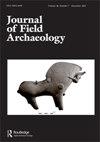Settlement Discontinuities in Southwestern Arabia during the Middle and Late Holocene: The Bayḥān (Yemen) Region
IF 1.5
1区 历史学
0 ARCHAEOLOGY
引用次数: 0
Abstract
ABSTRACT Recent research has produced an increasingly nuanced but still incomplete understanding of Neolithic through Iron Age communities in southwestern Arabia. Present evidence indicates that foraging communities in the lowland interior of Yemen adopted animal herding during the 6th millennium b.c. and irrigation farming during the 3rd millennium b.c. or possibly earlier. Survey in the Wādī Bayḥān area has identified multiple settlement discontinuities. Prehistoric structures in Wādī Ṣurbān reflect episodic occupation, probably by Bronze Age pastoralists. Geomorphological evidence for Bronze Age irrigation systems appears in large valleys; these systems continued into the Iron Age and developed in small valleys. Geomorphological and archaeological evidence suggests an occupation hiatus around 700 b.c. in some larger valleys such as Wādī Ḍurā’. Settlement discontinuities seem to have responded to abrupt climate fluctuations and to regional political history.全新世中晚期阿拉伯西南部的聚落不连续:Bayḥān(也门)地区
摘要最近的研究对阿拉伯西南部的新石器时代到铁器时代的社区产生了越来越微妙但仍然不完整的理解。现有证据表明,也门内陆低地的觅食社区在公元前6千年采用了畜牧业,在公元前3千年或更早采用了灌溉农业。Wādī湾调查ḥān地区发现了多个定居点间断点。Wādī的史前建筑Ṣurbān反映了可能是青铜时代牧民的偶发占领。青铜时代灌溉系统的地貌证据出现在大峡谷中;这些系统一直延续到铁器时代,并在小山谷中发展起来。地貌和考古证据表明,在公元前700年左右,一些较大的山谷,如瓦迪基,出现了占领中断Ḍurā'。定居点的不连续性似乎是对气候突然波动和地区政治历史的反应。
本文章由计算机程序翻译,如有差异,请以英文原文为准。
求助全文
约1分钟内获得全文
求助全文
来源期刊

JOURNAL OF FIELD ARCHAEOLOGY
ARCHAEOLOGY-
CiteScore
4.60
自引率
5.30%
发文量
29
期刊介绍:
The Journal of Field Archaeology is an international, refereed journal serving the interests of archaeologists, anthropologists, historians, scientists, and others concerned with the recovery and interpretation of archaeological data. Its scope is worldwide and is not confined to any particular time period. Contributions in English are welcomed from all countries.
 求助内容:
求助内容: 应助结果提醒方式:
应助结果提醒方式:


